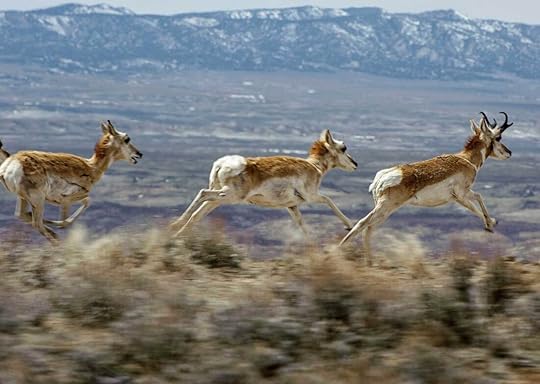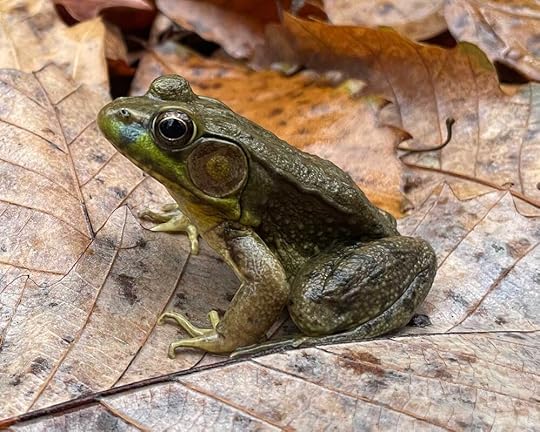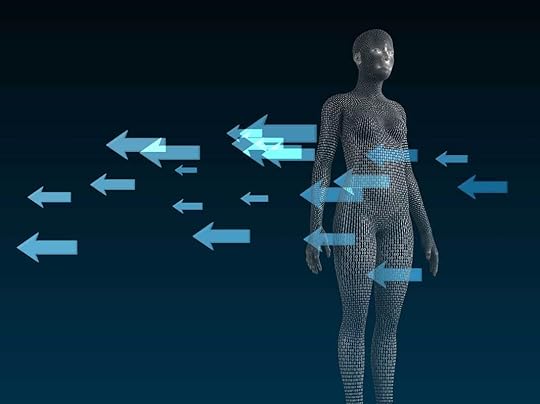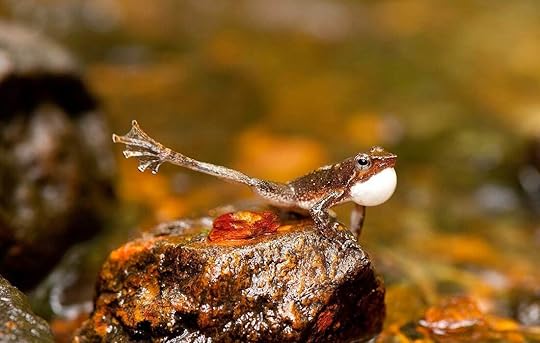Stan C. Smith's Blog, page 9
March 26, 2024
Life's Great Mysteries - When you forget something, where does that knowledge go?
We need some basic information first. How are memories stored in your brain? As it turns out, a memory is actually a bunch of chemical changes that take place at the connection points (synapses) between the neurons in your brain. Your brain has a lot of synapses, something like 125 trillion (that’s trillion with a T… this is as many synapses as the number of stars in 1,500 Milky Way galaxies). Each memory, depending on its complexity, is stored by slightly changing the chemistry of thousands or even millions of these connections. And… each synapse could contain tiny portions of thousands of different memories.
With memories that aren’t considered important, those slight chemical changes don’t last long, and the synapses go back to the way they were before. That’s called short-term memory. However, if the memory is more important for some reason (perhaps an emotional event), those slight chemical changes become permanent. Those memories remain accessible when needed. That’s called long-term memory.
My question is, what happens when those memories are no longer accessible? Are the chemical changes still there? If so, is there a way to access a memory even after it has been forgotten?
As you can imagine, studying these chemical changes in humans is kind of difficult—for ethical reasons. You can’t ask someone to volunteer to have their brain exposed in order to look closely at these processes (and you sure as heck can’t do it without asking them). However, ethical research has been done with human patients while they were in the process of having brain surgery for other reasons. In one of these studies, a specific neuron in a patient’s brain consistently responded when the patient saw a picture of Jennifer Aniston by herself, but it would not respond when the picture showed Aniston with Brad Pitt. Maybe the patient had watched numerous episodes of Friends but did not know that Aniston and Pitt used to be married. But, I digress…
How are these important memories eventually forgotten? It’s important to understand that the brain is changing constantly. The chemistries of the synapses are changing with every new memory. As these new memories are made, older chemical changes start to degrade. All kinds of complicated things happen. Similar memories start to merge into one. Sets of memories get isolated from newer memories and stay isolated until something happens in your life that triggers your ability to access them again. For example, you hear a song you haven’t heard in a long time. Tastes, smells, voices, certain words… these are all things that can reconnect those isolated memories to the present.
So, can long-forgotten memories somehow be unearthed, like digging up an archeological site? Kind of. For some memories, the chemical changes at synapses become too degraded to ever be accessed again. However, for those chemical changes that are not gone forever, psychologists have figured out ways to present certain types of sensory stimuli that systematically rebuild some of those old connections to long-isolated memories. I like to think of it as mining the mind.

Photo Credits:
- Memory loss (gears) - DepositPhotos
With memories that aren’t considered important, those slight chemical changes don’t last long, and the synapses go back to the way they were before. That’s called short-term memory. However, if the memory is more important for some reason (perhaps an emotional event), those slight chemical changes become permanent. Those memories remain accessible when needed. That’s called long-term memory.
My question is, what happens when those memories are no longer accessible? Are the chemical changes still there? If so, is there a way to access a memory even after it has been forgotten?
As you can imagine, studying these chemical changes in humans is kind of difficult—for ethical reasons. You can’t ask someone to volunteer to have their brain exposed in order to look closely at these processes (and you sure as heck can’t do it without asking them). However, ethical research has been done with human patients while they were in the process of having brain surgery for other reasons. In one of these studies, a specific neuron in a patient’s brain consistently responded when the patient saw a picture of Jennifer Aniston by herself, but it would not respond when the picture showed Aniston with Brad Pitt. Maybe the patient had watched numerous episodes of Friends but did not know that Aniston and Pitt used to be married. But, I digress…
How are these important memories eventually forgotten? It’s important to understand that the brain is changing constantly. The chemistries of the synapses are changing with every new memory. As these new memories are made, older chemical changes start to degrade. All kinds of complicated things happen. Similar memories start to merge into one. Sets of memories get isolated from newer memories and stay isolated until something happens in your life that triggers your ability to access them again. For example, you hear a song you haven’t heard in a long time. Tastes, smells, voices, certain words… these are all things that can reconnect those isolated memories to the present.
So, can long-forgotten memories somehow be unearthed, like digging up an archeological site? Kind of. For some memories, the chemical changes at synapses become too degraded to ever be accessed again. However, for those chemical changes that are not gone forever, psychologists have figured out ways to present certain types of sensory stimuli that systematically rebuild some of those old connections to long-isolated memories. I like to think of it as mining the mind.

Photo Credits:
- Memory loss (gears) - DepositPhotos
Published on March 26, 2024 08:12
March 15, 2024
Life's Great Mysteries - If someone is blind from birth, what do they see in their dreams?
Dreams are visual. In fact, my dreams are almost entirely visual—at least the parts I remember. If I were to rank the sensory aspects of my dreams, the top spot would be the visuals, followed perhaps by certain feelings, such as frustration (those pesky dreams where I have no lesson planned, but I have to teach a class right now) or euphoria (being able to fly). And, to be honest, those feelings often result from the visual aspects of the dreams. Occasionally, I remember sounds. For example, long ago I had an amazing dream about aliens invading Earth (they turned out to be friendly). Numerous ships of all sizes and shapes were zipping around or floating ominously in place. At one point, a dragonfly-sized robotic thingy flew up to me and hovered in front of my face, apparently checking me out, then it flew off. To this day I remember the chittering sound of its mechanical wings. But that’s rare—usually I don’t remember many of the voices or other sounds from my dreams. In my flying dreams, I remember feeling the cool night air as I fly over the trees. However, such touch sensations are few and far between. And, I don’t have any memories at all of smells in my dreams. So, for me, my dreams are mostly visual. Which is why this question is such a mystery to me. What do blind people experience in their dreams?
According to the Sleep Foundation, it depends on how long the person has been blind. Not surprisingly, those who became blind later in life do indeed experience visual dreams. After all, they've had visual experiences, which their minds can recreate in dreams. However, those with congenital blindness (blind from birth) are more difficult to study, and researchers disagree on the answer. Why is it difficult to study their dreams? Think about it… they have no experiences with vision, therefore they have no experiences from which to describe visual dreams. This makes it difficult for a researcher to determine if the subjects’ verbal descriptions really describe visual scenes.
Interestingly, researchers have found that many congenitally-blind people are able to draw pictures of what they “saw” in their dreams, in the same way that sighted people can. To me, this is convincing evidence that congenitally-blind people can have visual dreams, even though they have never seen anything in their entire life. Most researchers, however, believe blind people have far fewer visions in their dreams than sighted people. And, as when they are awake, their minds make up for the lack of visual experiences by increasing other sensory experiences, such as sound, taste, touch, and smell.

Photo Credits:
- Man dreaming - DepositPhotos
According to the Sleep Foundation, it depends on how long the person has been blind. Not surprisingly, those who became blind later in life do indeed experience visual dreams. After all, they've had visual experiences, which their minds can recreate in dreams. However, those with congenital blindness (blind from birth) are more difficult to study, and researchers disagree on the answer. Why is it difficult to study their dreams? Think about it… they have no experiences with vision, therefore they have no experiences from which to describe visual dreams. This makes it difficult for a researcher to determine if the subjects’ verbal descriptions really describe visual scenes.
Interestingly, researchers have found that many congenitally-blind people are able to draw pictures of what they “saw” in their dreams, in the same way that sighted people can. To me, this is convincing evidence that congenitally-blind people can have visual dreams, even though they have never seen anything in their entire life. Most researchers, however, believe blind people have far fewer visions in their dreams than sighted people. And, as when they are awake, their minds make up for the lack of visual experiences by increasing other sensory experiences, such as sound, taste, touch, and smell.

Photo Credits:
- Man dreaming - DepositPhotos
Published on March 15, 2024 15:50
February 16, 2024
Life's Great Mysteries - When I have dreams, why does it often feel like I’ve had those dreams before?
I haven’t had one in quite a while, but I used to have recurring dreams in which I could fly. But I could only lift off the ground if I concentrated hard enough. And I always flew at night, when people couldn’t see me. In these dreams I had these incredibly visual scenes of flying over darkened trees and buildings. In other dreams, I’m trying to solve some problem or get something right (without ever having success, of course). Then, when I wake (assuming I remember the dream), I feel like I’ve had that same scenario in numerous previous dreams.
The question is… did I really dream about those same scenarios in previous dreams, or do I just think I did? After all, dreams are snippets of things that have happened to you (or things you’ve imagined, such as flying) while you were awake. In other words, by definition, dreams should always seem kind of familiar. So, are recurring dreams actually recurring, or do they just seem to be recurring?
As it turns out, according to the Academy of Sleep and Wellness, 60 to 75 percent of adults really do experience recurring dreams. And for whatever reason, recurring dreams are experienced more by women than by men. People report that these recurring dreams may take place over a span of weeks, or months, and sometimes throughout their entire life.
Interestingly, the majority of recurring dreams are considered nightmares, involving unpleasant or frustrating situations, such as falling, losing your teeth, being chased by something, or being unprepared for an exam. Most of the articles I found contained tips for how to stop recurring dreams. Hmm… okay, I do have one recurring dream I wouldn’t mind stopping. It’s my teacher version of the exam dream mentioned above. It always involves me being unprepared for a class I must teach, and I find out the class is starting like, right now. I have this dream all the time, even though I’ve been retired from teaching for years. However, most of my recurring dreams are positive, even euphoric. The flying dream is an example. Another example is being outside somewhere, and the scenery is bizarrely beautiful, or I keep finding impossibly beautiful animals, such as snakes with rainbow colors. I don’t want advice on how to stop these recurring dreams, I want to advice on how to make them happen more often.
Photo Credits:
- Man flying over field - DepositPhotos
The question is… did I really dream about those same scenarios in previous dreams, or do I just think I did? After all, dreams are snippets of things that have happened to you (or things you’ve imagined, such as flying) while you were awake. In other words, by definition, dreams should always seem kind of familiar. So, are recurring dreams actually recurring, or do they just seem to be recurring?
As it turns out, according to the Academy of Sleep and Wellness, 60 to 75 percent of adults really do experience recurring dreams. And for whatever reason, recurring dreams are experienced more by women than by men. People report that these recurring dreams may take place over a span of weeks, or months, and sometimes throughout their entire life.
Interestingly, the majority of recurring dreams are considered nightmares, involving unpleasant or frustrating situations, such as falling, losing your teeth, being chased by something, or being unprepared for an exam. Most of the articles I found contained tips for how to stop recurring dreams. Hmm… okay, I do have one recurring dream I wouldn’t mind stopping. It’s my teacher version of the exam dream mentioned above. It always involves me being unprepared for a class I must teach, and I find out the class is starting like, right now. I have this dream all the time, even though I’ve been retired from teaching for years. However, most of my recurring dreams are positive, even euphoric. The flying dream is an example. Another example is being outside somewhere, and the scenery is bizarrely beautiful, or I keep finding impossibly beautiful animals, such as snakes with rainbow colors. I don’t want advice on how to stop these recurring dreams, I want to advice on how to make them happen more often.

Photo Credits:
- Man flying over field - DepositPhotos
Published on February 16, 2024 10:06
February 9, 2024
Awesome Animal Fact - Speedy Pronghorns
Did you know the pronghorn (sometimes called the American antelope) is the fastest running animal in North America? Adults can run 55 miles per hours (88 km/hr). At only four days old, a pronghorn calf can outrun a human.
The pronghorn is not really an antelope, as antelopes are native to Africa, India, and Asia. People started calling pronghorns antelopes simply because they have a vague resemblance to some of the true antelopes. The closest living relatives of the pronghorn are giraffes and the okapi.
Okay, so why are antelopes so incredibly fast? Partly because they live in open prairies where the only way to escape predators is running. But this doesn't explain why they are so much faster than other prairie mammals—white-tailed deer and mule deer have top speeds of only 35 mph (56 km/hr). And the pronghorn is far faster than the fastest living predators in North America. Why?
One good explanation is that the pronghorn evolved alongside some of the fastest predators in North America that are now extinct, such as the two species of American cheetah. These two big cats went extinct about 16,000 years ago, but the pronghorn still exists and is still as fast as it needed to be to escape the American cheetahs.
Pronghorns are slower than modern cheetahs (of Africa and Iran), but pronghorns can run at top speed for far longer, which probably allowed them to escape from American cheetahs most of the time.

Photo Credits:
- Pronghorns running - DepositPhotos
The pronghorn is not really an antelope, as antelopes are native to Africa, India, and Asia. People started calling pronghorns antelopes simply because they have a vague resemblance to some of the true antelopes. The closest living relatives of the pronghorn are giraffes and the okapi.
Okay, so why are antelopes so incredibly fast? Partly because they live in open prairies where the only way to escape predators is running. But this doesn't explain why they are so much faster than other prairie mammals—white-tailed deer and mule deer have top speeds of only 35 mph (56 km/hr). And the pronghorn is far faster than the fastest living predators in North America. Why?
One good explanation is that the pronghorn evolved alongside some of the fastest predators in North America that are now extinct, such as the two species of American cheetah. These two big cats went extinct about 16,000 years ago, but the pronghorn still exists and is still as fast as it needed to be to escape the American cheetahs.
Pronghorns are slower than modern cheetahs (of Africa and Iran), but pronghorns can run at top speed for far longer, which probably allowed them to escape from American cheetahs most of the time.

Photo Credits:
- Pronghorns running - DepositPhotos
Published on February 09, 2024 09:36
January 16, 2024
Life's Great Mysteries- Why does sour cream have an expiration date?
This is one of those questions often asked as a joke. Kind of like “Why is there only one word for thesaurus?” Or… “Do fish get cramps after eating?” Or… “What do little birdies see when they get knocked unconscious?” Or… “Is boneless chicken considered to be an invertebrate?” Those are just silly questions (or are they?), but it occurs to me that the sour cream question could actually be legitimate. After all, sour cream is a dairy product created by subjecting regular cream to bacteria cultures. The bacteria turn the lactose into lactic acid, which is sour. The process also thickens the cream.
So, if the cream has already been “attacked” and soured by bacteria, why bother with an expiration date? Well, these good bacteria that sour the cream by making lactic acid are not particularly well trained. Nor are they sentient. Nor would they care what we think even if they were sentient. What I’m trying to say is, the bacteria have no interest in stopping what they like to do, which is gobble up lactose then “poop” out lactic acid (which people gladly pay good money to consume, by the way). Nope, these bacteria will just keep on keeping on. Therefore, when the cream gets just enough bacteria poop to taste yummy to humans, the humans put the stuff in the refrigerator to slow down the bacteria, then they slap a price tag on it and sell it. Do the bacteria know about the refrigerator and the price tag and the selling? Of course not. They keep on eating and pooping, although at a much slower rate. Eventually, even in the fridge, they will make your sour cream have too much lactic acid (as well as other waste products), and then your sour cream has officially gone sour. It will be sour sour cream.
Oh, and don’t forget there are other bacteria, not to mention mold, that would happily gobble up your sour cream. Those little critters start getting into your sour cream the moment you open the container, and they produce waste products that are nasty. In fact, some of those waste products can turn you into a double-barreled Old Faithful (although less pleasant to watch). So, it’s wise to pay attention to the expiration date.
And one more thing… don’t try to make sour cream by letting your regular cream sit out and turn sour. Real sour cream is made by first pasteurizing the cream (killing the bad bacteria), then carefully introducing the good, lactose-munching bacteria, all in a sterile, clean environment.

Photo Credit:
- Sour cream - Stan C. Smith
So, if the cream has already been “attacked” and soured by bacteria, why bother with an expiration date? Well, these good bacteria that sour the cream by making lactic acid are not particularly well trained. Nor are they sentient. Nor would they care what we think even if they were sentient. What I’m trying to say is, the bacteria have no interest in stopping what they like to do, which is gobble up lactose then “poop” out lactic acid (which people gladly pay good money to consume, by the way). Nope, these bacteria will just keep on keeping on. Therefore, when the cream gets just enough bacteria poop to taste yummy to humans, the humans put the stuff in the refrigerator to slow down the bacteria, then they slap a price tag on it and sell it. Do the bacteria know about the refrigerator and the price tag and the selling? Of course not. They keep on eating and pooping, although at a much slower rate. Eventually, even in the fridge, they will make your sour cream have too much lactic acid (as well as other waste products), and then your sour cream has officially gone sour. It will be sour sour cream.
Oh, and don’t forget there are other bacteria, not to mention mold, that would happily gobble up your sour cream. Those little critters start getting into your sour cream the moment you open the container, and they produce waste products that are nasty. In fact, some of those waste products can turn you into a double-barreled Old Faithful (although less pleasant to watch). So, it’s wise to pay attention to the expiration date.
And one more thing… don’t try to make sour cream by letting your regular cream sit out and turn sour. Real sour cream is made by first pasteurizing the cream (killing the bad bacteria), then carefully introducing the good, lactose-munching bacteria, all in a sterile, clean environment.

Photo Credit:
- Sour cream - Stan C. Smith
Published on January 16, 2024 05:57
January 6, 2024
Awesome Animal Fact - Whale Ear Wax
Did you know you can tell how old a whale is by looking at its ear wax? All cetaceans (whales, dolphins and porpoises) make earwax, just like people do. In sperm whales and some baleen whales, this ear wax builds up over time, forming layers and creating an earwax plug in the ear canal.
Now, in people, a big earwax plug can interfere with our hearing. Not so in whales. Remember, whales listen underwater. The earwax plug is about the same density as the water, so it actually helps transmit the sound waves to the whale's eardrum. The earwax plug actually works as a hearing aid. If the whale's ear canal contained air, this wouldn't work.
Anyway, if you slice a whale earwax plug lengthwise, you will see layers, similar to tree rings. The dark layers form when the whales are migrating (not eating). The light layers form when the whales are feeding. So, these layers correspond to the whale's cycle of migrating and eating. Blue whales, for example, migrate each year, so each dark layer represents one year of the whale's life.
Scientists have been using earwax to determine whale age since the 1950s.

Photo Credits:
- Humpback whale - DepositPhotos
Now, in people, a big earwax plug can interfere with our hearing. Not so in whales. Remember, whales listen underwater. The earwax plug is about the same density as the water, so it actually helps transmit the sound waves to the whale's eardrum. The earwax plug actually works as a hearing aid. If the whale's ear canal contained air, this wouldn't work.
Anyway, if you slice a whale earwax plug lengthwise, you will see layers, similar to tree rings. The dark layers form when the whales are migrating (not eating). The light layers form when the whales are feeding. So, these layers correspond to the whale's cycle of migrating and eating. Blue whales, for example, migrate each year, so each dark layer represents one year of the whale's life.
Scientists have been using earwax to determine whale age since the 1950s.

Photo Credits:
- Humpback whale - DepositPhotos
Published on January 06, 2024 05:07
January 1, 2024
Life's Great Mysteries - Why is the alphabet in that particular order?
ABCDEFGHIJKLMNOPQRSTUVWXYZ. Seriously, why? Why in the name of all that is holy does M have to come before N? This specific order is one of the first things we learn in school, but we never ask why! I understand why numbers need to be in a specific order. They’re numbers, that’s why. But letters don’t represent quantity. They are simply symbols used to make words. They don’t have to be in any particular order. If you scrambled the entire alphabet and started teaching the new scrambled order of letters in elementary schools, what difference would it make? An R is still an R no matter where you put it in the sequence. It still has the same properties. Pirates will still say Arrrr. Of course, if we rearrange the alphabet, that would mess up some things. Dictionaries would definitely have to be rearranged. But regardless, it all just seems so… random.
To solve this particular mystery, we need to go back in time. In ancient Egypt, the workers and slaves (you know them… those lowly workers who built the pyramids and farmed the land along the Nile river) were not given the opportunity to learn the complex system of hieroglyphics used there. So, they developed their own basic system of symbols, which turned out to be the basis of almost all modern alphabets used today. The Egyptians eventually started using this system, and the Phoenicians (a group of seafaring traders who lived on the coast of the Mediterranean Sea) took the system of symbols and developed it into the first fully formed alphabet. The Greeks adapted it for their needs (providing us with those letters you see on fraternity and sorority houses today), and the Romans borrowed it from the Greeks and eventually turned it into the alphabet we still use today. By the way… the Romans took the letters Y and Z, moved them from the front of the alphabet (where the Greeks had them), and stuck them at the end. The written Roman language led to Old English, which led to Middle English, which led to the modern English used today.
So, back to the original question… why are the letters in the specific order as we know it? The answer? We don’t exactly know for sure. Language historians disagree. Some think it goes back to the Egyptians and how they arranged their hieroglyphics. Others think the letters used to have numbers assigned to them, and they were simply arranged in numerical order. Those numbers were lost over time, but the basic order of the letters remains. Some psychologists think it is because this particular order was chosen due to it being easy to memorize because of the nice bouncy cadence of the sounds. This last idea may seem far-fetched, but if you think about it, there’s no doubt that the order of the letters is easy to pronounce and to memorize. To me, it’s kind of like supercalifragilisticexpialidocious. This word was carefully created to be easy to memorize and pronounce. Just like the alphabet.

Photo Credits:
- Cookie cutter alphabet - DepositPhotos
To solve this particular mystery, we need to go back in time. In ancient Egypt, the workers and slaves (you know them… those lowly workers who built the pyramids and farmed the land along the Nile river) were not given the opportunity to learn the complex system of hieroglyphics used there. So, they developed their own basic system of symbols, which turned out to be the basis of almost all modern alphabets used today. The Egyptians eventually started using this system, and the Phoenicians (a group of seafaring traders who lived on the coast of the Mediterranean Sea) took the system of symbols and developed it into the first fully formed alphabet. The Greeks adapted it for their needs (providing us with those letters you see on fraternity and sorority houses today), and the Romans borrowed it from the Greeks and eventually turned it into the alphabet we still use today. By the way… the Romans took the letters Y and Z, moved them from the front of the alphabet (where the Greeks had them), and stuck them at the end. The written Roman language led to Old English, which led to Middle English, which led to the modern English used today.
So, back to the original question… why are the letters in the specific order as we know it? The answer? We don’t exactly know for sure. Language historians disagree. Some think it goes back to the Egyptians and how they arranged their hieroglyphics. Others think the letters used to have numbers assigned to them, and they were simply arranged in numerical order. Those numbers were lost over time, but the basic order of the letters remains. Some psychologists think it is because this particular order was chosen due to it being easy to memorize because of the nice bouncy cadence of the sounds. This last idea may seem far-fetched, but if you think about it, there’s no doubt that the order of the letters is easy to pronounce and to memorize. To me, it’s kind of like supercalifragilisticexpialidocious. This word was carefully created to be easy to memorize and pronounce. Just like the alphabet.

Photo Credits:
- Cookie cutter alphabet - DepositPhotos
Published on January 01, 2024 07:23
December 26, 2023
In our neck of the woods... Green Frogs
While hiking the other day, we saw the frog pictured below. The night before, the temperature had dropped to below freezing. Yet this critter seemed happy and active. Frogs never fail to surprise me.
At first glance, this looks like a young bullfrog (a very common frog in the midwest US). But this is actually a green frog (Lithobates clamitans). The bullfrog grows much larger, but a younger one looks a lot like a green frog.
How can you tell the difference? See that fold of skin extending from the frog's eye all the way down the length of its body? That's a sure sign this is a green frog. Bullfrogs only have the fold that wraps around the tympanum (the circular structure behind the frog's eye that serves as an eardrum).
By the way, the tympanum also allows you to determine if the frog is male or female. In this photo, see how the tympanum is much larger than the frog's eye? This means it's a male. If the tympanum is equal to or smaller than the eye, it's a female. This is true for green frogs and bullfrogs.

Photo Credit:
Green frog - Stan C. Smith
At first glance, this looks like a young bullfrog (a very common frog in the midwest US). But this is actually a green frog (Lithobates clamitans). The bullfrog grows much larger, but a younger one looks a lot like a green frog.
How can you tell the difference? See that fold of skin extending from the frog's eye all the way down the length of its body? That's a sure sign this is a green frog. Bullfrogs only have the fold that wraps around the tympanum (the circular structure behind the frog's eye that serves as an eardrum).
By the way, the tympanum also allows you to determine if the frog is male or female. In this photo, see how the tympanum is much larger than the frog's eye? This means it's a male. If the tympanum is equal to or smaller than the eye, it's a female. This is true for green frogs and bullfrogs.

Photo Credit:
Green frog - Stan C. Smith
Published on December 26, 2023 04:56
December 21, 2023
Life's Great Mysteries - At any given moment, are cell phone calls going through my body?
Think about it. Millions of people are making calls all the time. The phone calls from these cell phones (in the form of radiofrequency waves) go to nearby cell towers, which then transmit the waves all over heck and gone. These phone calls and texts and photos and funny cat videos are going through walls and trees and clouds and, of course, people. At this very moment, someone’s conversation about their favorite movie might be passing through your body. Someone is asking someone else out for their first date, and the person’s life-changing answer is flying directly through your heart. Someone is texting a picture of the Cajun gumbo dinner they are eating, and the picture is passing right through your stomach and intestines. Come to think of it, what about all those television and radio signals? A rerun of the original Star Trek series may be passing through your noggin right now. Oh, the things we could learn if we could detect and understand all these signals passing through us!
Is this really happening? As it turns out, yes and no. As you probably know, a cell phone won’t work well in a deep basement or behind really thick walls. That means there are limits to what radiofrequency waves can pass through. The human body is mostly water, and water can block the waves. So, your body partially blocks (absorbs) some of the waves. A human body isn’t all that thick (though mine is thicker than it used to be), so some of the waves do pass all the way through.
This begs the question, with all these radiofrequency waves passing through us, is it dangerous? As it turns out, the answer is, not really. Because it depends on how much of it we are getting. The radiofrequency waves coming from a cell phone are very weak. The waves from a large cell tower are much stronger, but they are directed at the horizon, not at the ground below them. The waves become less of a problem with distance. Basically, you don’t have to worry about it, unless you decide to climb to the top of a cell tower, pitch a tent and camp right next to the transmitter for the next ten years. Also, consider this… radiofrequency waves are not ionizing radiation like X-rays or gamma rays. They do not break chemical bonds in your body. Many, many studies have been done to see if these waves have ill effects on the body, but no adverse effects have been linked to cell phone use.
On the other hand, there may be problems with addiction to funny cat videos.

Photo Credits:
- Illustration of signals passing through body - DepositPhotos
Is this really happening? As it turns out, yes and no. As you probably know, a cell phone won’t work well in a deep basement or behind really thick walls. That means there are limits to what radiofrequency waves can pass through. The human body is mostly water, and water can block the waves. So, your body partially blocks (absorbs) some of the waves. A human body isn’t all that thick (though mine is thicker than it used to be), so some of the waves do pass all the way through.
This begs the question, with all these radiofrequency waves passing through us, is it dangerous? As it turns out, the answer is, not really. Because it depends on how much of it we are getting. The radiofrequency waves coming from a cell phone are very weak. The waves from a large cell tower are much stronger, but they are directed at the horizon, not at the ground below them. The waves become less of a problem with distance. Basically, you don’t have to worry about it, unless you decide to climb to the top of a cell tower, pitch a tent and camp right next to the transmitter for the next ten years. Also, consider this… radiofrequency waves are not ionizing radiation like X-rays or gamma rays. They do not break chemical bonds in your body. Many, many studies have been done to see if these waves have ill effects on the body, but no adverse effects have been linked to cell phone use.
On the other hand, there may be problems with addiction to funny cat videos.

Photo Credits:
- Illustration of signals passing through body - DepositPhotos
Published on December 21, 2023 04:37
December 17, 2023
Awesome Animal Fact - Dancing Frogs
Did you know there are 24 species of dancing frogs, and the males of all species "dance" to attract mates? Dancing frogs (all of them are in the genus Micrixalus) live in the Western Ghats region of South India.
Okay, so why do we call them dancing frogs? When trying to attract a female, male dancing frogs stretch out their hind legs to the side, one at a time, and wave their webbed toes around in the air in a rapid motion. Kind of like a dance... well, a dance in which you only move one leg at a time, flex your toes, then do the same with the other leg.
This side-kicking behavior also comes in handy when another male frog tries to crowd in and steel the female. The first male will kick the intruding male away with a quick snap of its leg.
Unfortunately, dancing frogs are some of the most endangered frogs in the world, with 15 of the 24 species endangered and 2 species critically endangered. These frogs are threatened by multiple anthropogenic factors. This means factors related to human activities. As usual!

Okay, so why do we call them dancing frogs? When trying to attract a female, male dancing frogs stretch out their hind legs to the side, one at a time, and wave their webbed toes around in the air in a rapid motion. Kind of like a dance... well, a dance in which you only move one leg at a time, flex your toes, then do the same with the other leg.
This side-kicking behavior also comes in handy when another male frog tries to crowd in and steel the female. The first male will kick the intruding male away with a quick snap of its leg.
Unfortunately, dancing frogs are some of the most endangered frogs in the world, with 15 of the 24 species endangered and 2 species critically endangered. These frogs are threatened by multiple anthropogenic factors. This means factors related to human activities. As usual!

Published on December 17, 2023 15:01



